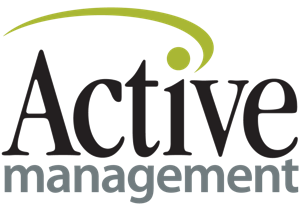Michelle Segar Part 2: The Secret Life of Motivation – Are You Fueled to Succeed?

Last week, in the first in this three-part series, I explained how having external sources of fuel, or drive, to make behavioral changes is costly for individuals, practitioners, patients, and organizations. If you’d like to read these posts in order, start with Part 1.
This post will discuss a much better alternative and how we can all achieve it.
In contrast to being externally fueled, when we are internally fueled toward change and goals, it’s OUR fuel. We own it. We generate it.
Let’s briefly return to the analogy of a car I used in the last post. When the origin of our fuel resides inside us it is also renewable! We don’t have to fear running out of “gas” or spend time seeking out stations to refuel and reenergize ourselves.
The framework that has most informed our understanding about the superiority of having an internal source of fuel for sustainable behavior is called “self-determination theory.”
We Need the Right Kind of Fuel
There has been an abundance of research using self-determination theory across many different types of behaviors, including:
- losing weight
- adhering to medications
- controlling glucose
- smoking cessation
- exercise
- academic success
- among many others
Drive, an interesting book by bestselling author Dan Pink, reviews some of this research and persuasively reports studies showing that intrinsic “drive” (or fuel) trumps extrinsic in a whole host of areas.
This research consistently shows that when we are internally-fueled (self-determined) we are more likely to persist toward our goals in the face of challenges. Because of that stronger drive, we are more likely to sustain our target behaviors over time.
Initiating change out of a sense of ownership injects that behavior with authenticity and positive feelings. This transforms what was once a mundane chore into a behavior symbolizing purpose and meaning.
So, how can individuals, practitioners, and organizations better understand this essential conversion?
For Individuals (you, me):
When our behavior aligns with our personal life values it creates a positive feeling toward the behavior. Whether we feel positively or negatively about a new behavior determines whether we “want” it or “dread” it. Because this occurs outside of our awareness, our feelings about the behavior we are working to adopt matter a great deal.
For Practitioners: (treating physicians, NPs, personal trainers, or coaches):
Help your patients and clients understand that health-related behaviors are vehicles of:
- daily happiness
- energy
- success
This makes them relevant, and thus, compelling to fit into busy lives. When people become aware of these other purposes for self-care behavior, their source of fuel becomes internalized. This results in the highest quality fuel.
Working with your clients to identify the specific ways any given behavior can improve their daily quality of life, and noticing those benefits in real time, sets both of you up for success. See my earlier post discussing new research on potential differences between men and women on this question.
Organizations experience exponential benefits when they create contexts which support self-determined sources of fuel.
Organizations influence whether employees develop external or internal sources of fuel. This is especially true in health promotion communications and initiatives. How organizations promote health to employees creates the foundation for either short-term or long-term behavior. Because internal sources of fuel are renewable, they are the real driver of sustainable behavior. Sustainability is the “Holy Grail” because it is necessary to prevent and manage expensive chronic conditions.
Given this, organizations need to recognize whether or not they are fostering internal or external fuel. But there’s even more benefits to organizations! Research shows other benefits to having an internal source of fuel, such as enhanced psychological well-being. This positivity from internally sourced fuel is in stark contrast to the negative effects from externally fueled sources such as anxiety, shame, guilt, poor performance, and even decreased immune function.
Next week, in Part 3 of this series, I’ll offer specific ways that individuals, professionals, and organizations can create internal sources of fuel. I hope you’ll stay tuned.
What are your thoughts and experiences with this? Please share with me in the comments section below.
New featured interviews with me about these and related ideas can been read in Prevention Magazine’s “Healthiest Year Ever” by Virginia Sole-Smith.
Moving Toward Happiness: One Step a Time,

Michelle
Find these ideas interesting or useful? If so, please share this post with your friends, family, colleagues, and/or health care professionals through social media. Connect with Michelle Segar at www.MichelleSegar.com
You can grab a copy of No Sweat by clicking here.
Michelle has also been a guest on The Fitness Business Podcast. In fact she had one of the top 4 most downloaded shows in 2015. You can listen to her shows by clicking the links below:
054 Michelle Segar – Self Care Behaviour and the Effect it has on Trainer Client Relationships

Justin is the Managing Director of Active Management, which he began January 2004. He offers coaching to businesses worldwide in everything from start up and design to marketing and sales systems. Justin also facilitates four Australian and New Zealand ‘fitness industry roundtables’ events, which allows him to see a huge cross section of business models.
